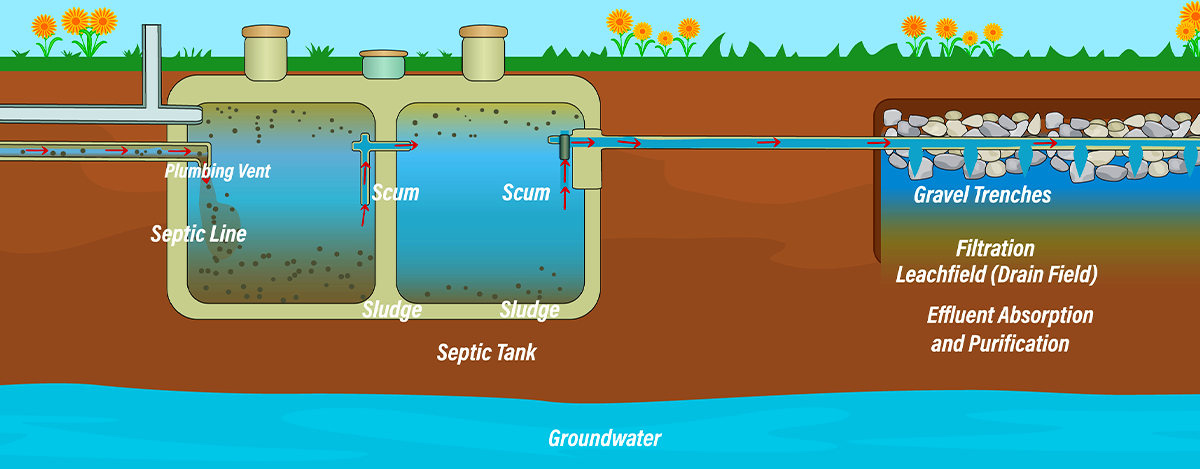Maintaining Your Septic System
Maintaining your septic system helps maintain the environment and protects our local waterways. If you have a septic system, it is vital to keep up with its proper care and maintenance to avoid costly replacement and reduce the risk of contaminating local and regional waters. Overloading your septic system with water is a leading cause of failure.
How does a septic system work?
A septic tank is a buried, water-tight container usually made of concrete, fiberglass or polyethylene. Its job is to hold wastewater long enough to allow solids to settle down to the bottom forming sludge, while the oil and grease floats to the top. Compartments in a T-shaped outlet prevent the sludge and scum from leaving the tank and traveling into the drain field area. Here is a brief overview of how a septic system works:
- All of the water runs out of your home from one main drainage pipe into a septic tank.
- The liquid wastewater then exists the tank into the drain field. If the drain field is overloaded with too much liquid, it will flood, causing sewage to flow to the ground surface or create backups into toilets and sinks.
- The wastewater percolates into the soil, naturally removing harmful bacteria, viruses and nutrients.
Why it is important to maintain your septic system?
- A malfunctioning septic system can be costly to repair. On average the cost to repair or replace a septic system can range between $3,000 and $7,000. The cost to maintain your septic system is approximately $250 to $500 every 3 to 5 years.
- By maintaining your septic system, you are protecting the value of your property. A malfunctioning septic system can drastically reduce the property value, hamper the sale of your property and pose a legal liability.
- A properly maintained septic system keeps your water clean and safe; it reduces the risk of contaminating the community, local and regional waters.
- A malfunctioning septic system can harm the local ecosystem by killing native plants and aquatic species.
What you can do to maintain your septic system?
Septic systems should be inspected at least every 3 years by a licensed contractor and your tank should be pumped generally every three to five years or as recommended by the inspector.
- Your septic system contains a live collection of organisms that digest and treat waste. Pouring chemicals down your drain can kill these organisms and harm your septic system.
- Reduce the amount of fats, grease and solids entering your septic system by eliminating the use of a garbage disposal. Note, increased disposal use can result in more frequent pumping of your septic tank.
- Do not flush feminine hygiene products, condoms, diapers, cigarette butts, coffee grounds or cat litter – these products can clog and potentially damage your septic system.
- The less water you use, the less water enters the septic system, which decreases the workload. Run the dishwasher and washing machines only when full. Repair leaky toilets and pipes. When replacing toilets and faucets, select high-efficiency models.
It is equally as important to maintain your leach field.
- Do not park or drive on your leach field.
- Only plant trees the appropriate distance away from the leach field to keep roots from growing into the system.
- Keep sump pumps, roof drains and other rainwater drainage systems away from your leach field. Excess water can overwhelm the system and stop the treatment process.

